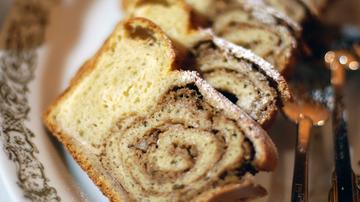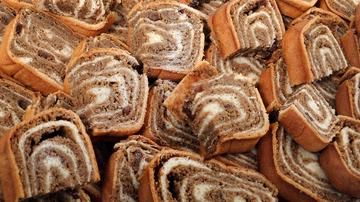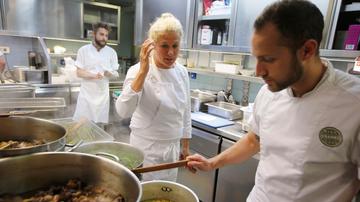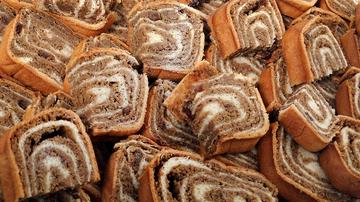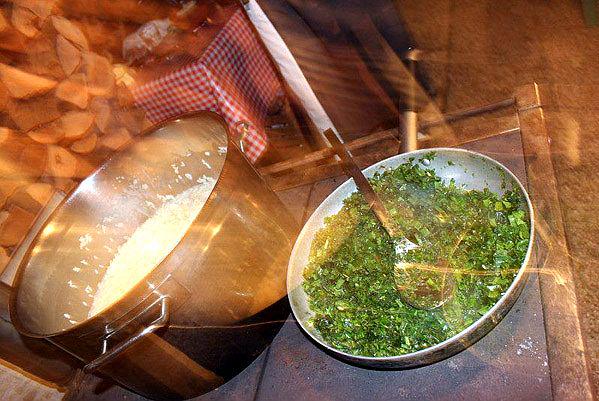
In the morning, soldiers would drink white coffee and tea and eat some polenta. Bread was a delicacy for ordinary soldiers. Lunch included a soup, a peace of meat and some barley or cabbage. On the other hand, there was always plenty of food, wine and rum for the commanding officers. In the morning, they would have tea and eat sardines and bread with butter. For lunch, they would enjoy a soup, a large slice of meat with various vegetables, some compote, and a peace of cake or cigarettes. For dinner, they would again savour meat dishes which they would wash down with wine, cognac or rum.
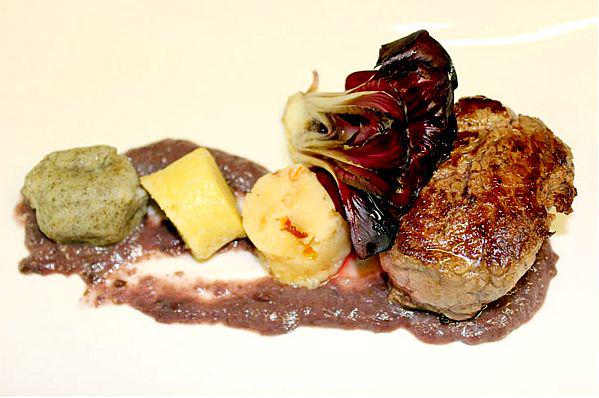
The Ošterija Žogica restaurant is situated in Solkan, not far from the Solkan bridge, the world's largest stone bridge. In its front-yard, guests can enjoy the emerald blue colour of the Soča river and green walkways. The place is beautiful, cosy and has an air of mystery to it. A century ago, soldiers trod these paths, where shootings, bomb explosions and screams were heard. Nowadays, only the culinary offer in the Ošterija Žogica restaurant still reminds of the Great War. At first, the Ošterija Žogica restaurant specialised in offering pasta dishes and pizzas. Recently, however, it has increasingly included offers dedicated to the 100th anniversary of World War I.
A menu from the front line
Of course, the restaurant does not offer dishes which ordinary soldiers ate. Every restaurant seeks to appeal to its guests, whereas the food provided to soldiers during World War I was very simple. It was a frugal cuisine. Soldiers had to satisfy with what was available at the time. On the other hand, the nobility and military officers enjoyed an entirely different cuisine. They barely felt the frugality that characterised living on the front line. Nataša Šuligoj, the owner of the Ošterija Žogica restaurant, explains that as the war broke out, military officers continued to enjoy a very exquisite cuisine. To them, the war was a rather high-society event in the sense of "let's pop on the battlefield for a while". In what ways then did the soldiers' food differ from the food of their commanders? Šuligoj explains: "In the morning, soldiers would drink white coffee and tea and eat some polenta. Bread was a delicacy for ordinary soldiers. Lunch included a soup, a peace of meat and some barley or cabbage. On the other hand, there was always plenty of food, wine and rum for the commanding officers. In the morning, they would have tea and eat sardines and bread with butter. For lunch, they would enjoy a soup, a large slice of meat with various vegetables, some compote, and a peace of cake or cigarettes. For dinner, they would again savour meat dishes which they would wash down with wine, cognac or rum". Šuligoj goes on to explain that soldiers of at least 17 nationalities fought in battlefields around Solkan. The cookery on the front line reflected the ethnic diversity. Officers and noblemen relished various dainties such as caviar and truffles.
According to Šuligoj, there were two menus on the front line: one was a propaganda menu apprising the enemy that the army was well fed and hence dangerous; the other one was a military menu with food being prepared undercover, clandestinely and in accordance with the possibilities. The difference between the two was vast. The propaganda menu included the following food: jam, bacon, cheese, vegetables, chocolate, tea, rum and other treats. In reality, however, soldiers had to eat stale bread, complete with sawdust or similar and made of dried turnips.
The food was often rationed by calories: an ordinary soldier received a daily ration of 3000 calories, whereas in Kobarid, the rations would sometimes amount to 3600 calories. Still, many soldiers on the front line could for the first time taste food that was not available at home; for example, oranges. As the war was nearing its end, a soldier's daily ration hardly reached 2000 calories.
The Soldier's Soup
On opening the menu, the first page includes an introduction by Toni Gomišček, the former director of the Vinoteka Brda company and a journalist specialising in the topics of wine and food. Gomišček wrote: "Napoleon knew well: "It's the food that makes the soldier." A hungry army may be capable of drawing courage out of despair, but a hungry soldier is nevertheless a bad soldier. During World War I, it became obvious that the scales of luck will eventually tip in favour of those who fed their fighting spirits with good food. "Further in the introduction to the menu, one may read the following: "The pasta got overcooked, the fat cooled down and the rice became a solid block. The main seasonings were hunger and a bit of imagination. "
According to Gomišček, it was imagination that gave rise to typical soldiers' recipes, flavoured with gallows humour. One such example is the recipe for a dish called the Soldier's Soup. Here is how the recipe goes: "Once you have managed, in whatever possible way, to get 100 g of flour, some potatoes and three spoonfuls of olive oil, try to find a peaceful, bomb-proof place. Put the flour in a kettle or helmet, light a fire and mix the flour until its colour resembles that of a burnt tank. Add the oil and mix again, until the blend is as thick as a trench during thunderstorm. Add some water or wait for the rains to pour down and make a medium-creamy sap. Peel the potatoes, slice them and add them to the soup. A brave soldier must eat the peels as well! Once the potatoes have softened, the soup is ready for consumption. But be careful! The aromas may catch the attention of the enemy's sniper."
From tin cans to hay and grenades
Once you have read this interesting introduction, the question arises: which army dish should I order then? The choice is quite fascinating and perhaps it is best to visit the restaurant several times and gradually try all dishes. If you go for a meat menu, the waiters, clad as army officers, will serve you with a cold foal on summer grass as the appetiser. That will be followed by a meadow soup, a salad from the first fighting line, a donkey in a wrap of herbs, asparagus and potatoes, and on top of it, a sweet grenade as dessert. In case you love horses too much to eat an entire donkey, you can also choose a fish menu. Here, the appetiser will be a soldier's can. Yes, you got that right. The appetiser will be served in a can but it will be a tasty, marinated trout. This will again be followed by a meadow soup and, as the meal has only started and you probably feel hungry like a wolf, you could well imagine the lives of ordinary soldiers who in the final stages of World War I truly had to eat grass rather than vegetables. Of course, the soup served in the restaurant is not made of grass in the literal sense. It actually contains herbs and seasoners. The trout is very tasty, too. It will be served on a hay layer and actually tastes like hay. Again, part of the main course is the salad and for dessert, a grenade. On finishing your meal, you will be bursting with delight.
Let's build a bunker
As the summer season is opening, the Ošterija Žogica restaurant has ambitious plans: "The menu is only the beginning. We plan to expand our offer and turn part of our restaurant into a bunker, a trench or something similar." In fact, the restaurant has already begun realising its ideas: larger numbers of guests are now catered in what looks like a make-shift military camp. As they say: "World War I was a tragic event. It caused many casualties. And yet, the mingling of many different ethnic groups in the army ranks enriched those cultures. Hence, it is right that we bethink ourselves of the brave men and women."
Tanja Glogovčan, SINFO
In the morning, soldiers would drink white coffee and tea and eat some polenta. Bread was a delicacy for ordinary soldiers. Lunch included a soup, a peace of meat and some barley or cabbage. On the other hand, there was always plenty of food, wine and rum for the commanding officers. In the morning, they would have tea and eat sardines and bread with butter. For lunch, they would enjoy a soup, a large slice of meat with various vegetables, some compote, and a peace of cake or cigarettes. For dinner, they would again savour meat dishes which they would wash down with wine, cognac or rum.




















































